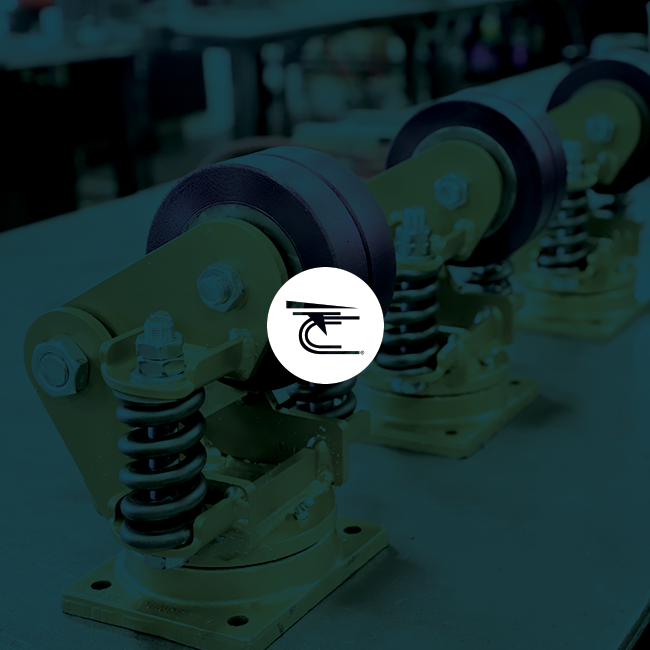

For centuries, industry has been guided by a smooth, slender track. Whether bearing the weight of the great iron horse trains that crisscrossed North America, or used more modestly to move cargo carts throughout vast manufacturing plants, track-guided transport is considered to be the lifeblood of many production and logistics operations.
Ensuring that these loads make it to their eventual destination is often a “groovy” experience – specifically, the grooved heavy-duty wheels which contour to the track. There are three basic types of grooved industrial caster wheels which are commonly found in these applications – but choosing the type for your guide way does take a little bit of advance planning, as well as some understanding of key rules which apply to track wheels.
First, it’s critical to ensure there is a planned “mismatch” between the hardness of the track and the industrial caster wheel. Simply put, it is impossible to get the same hardness in the track and the wheel as a means of minimizing the wear of one or the other.
Thus, one must decide that one or the other (wheel or track) is going to be the one that bears the brunt of the wear. Typically, it is the wear of the wheel that is planned into the system – considering it is easier and generally cheaper to change out wheels rather than to change out tracks. Using the “Rockwell D” scale – a standard of measurement of hardness – it is suggested that the wheel ideally be approximately five points softer than the track on which it is running, to assure that the wear is minimized on the rail.
Secondly, when configuring a cart or platform meant for track use, and if only four wheels will be engaging the track, it is suggested that only one side of the cart bear grooved wheels, while the other side of the cart feature flat-face wheels. Given that most tracks are not laid in perfect alignment, and track widths vary, this split configuration will ensure that cart can adapt without derailing.
With these rules in mind, let’s look at those common grooved-wheel configurations:
Double Flanged Wheel – U-Shaped Face: This configuration is certainly the most common configuration of a heavy-duty flanged caster wheel. The track rests within the U-shaped surface of the industrial wheel. Typically, the width of the “U” will be slightly larger than the surface of the track. There are common track sizes that are manufactured in high volume that have standard classifications. It is very important that you communicate the track size to assure the proper flanged caster track wheel . Material is generally cast iron or steel.
Single Flanged Wheel – L-Shaped Face: This flanged caster configuration with a heavy-duty wheel face captures the wheel on one side, as opposed to both sides. This allows the cart to stabilized on the track while minimizing guidance and rolling effort. Like the other heavy-duty flanged caster, wheel material is generally of cast iron or steel.
V-Groove Wheels: This is another common configuration of industrial wheel that will run on a track. The “V” is machined into the face of the wheel at 90 degrees, and a relief groove is placed at the base, assuring that the weight is evenly distributed on the track. Configuration of the track should closely profile the surface of the wheel. This design is very strong and can carry very heavy loads.
Engineering input can very valuable when it comes to designing and selecting the proper wheel and track configuration. The engineering group here at Caster Concepts has extensive experience in track wheel applications. We are happy to offer you expert input to help minimize the cost and assure down time is avoided.
And, if you would like to configure your own industrial casters right now and receive a downloadable CAD model, visit our Configurator page by clicking here.
For more information visit our website.